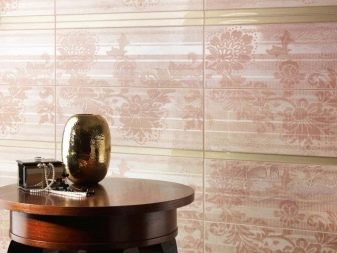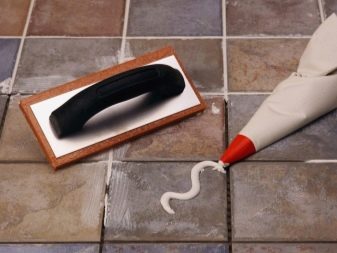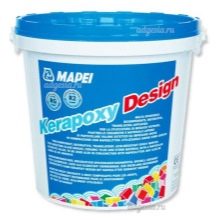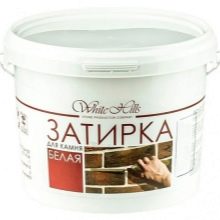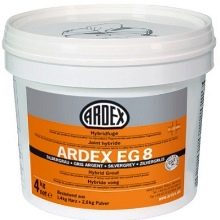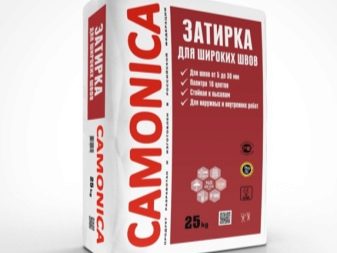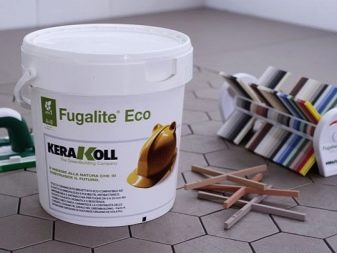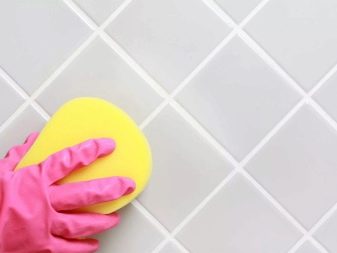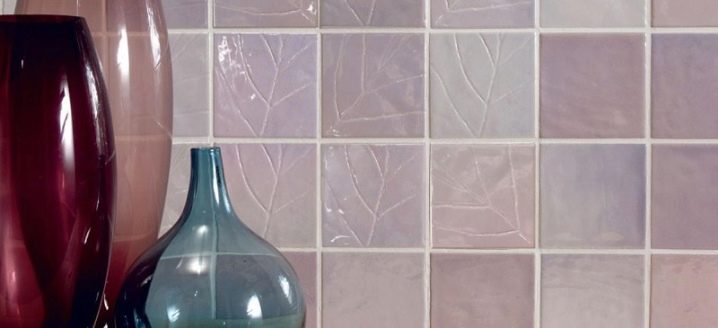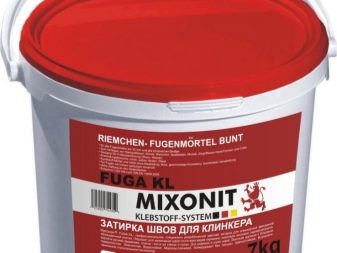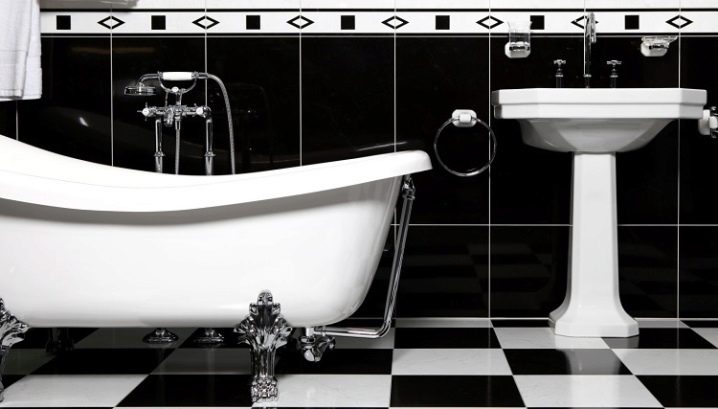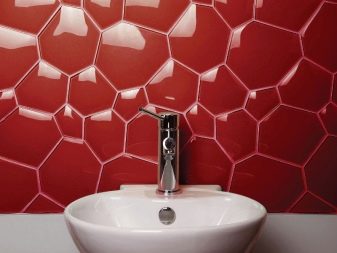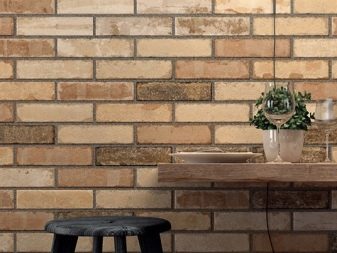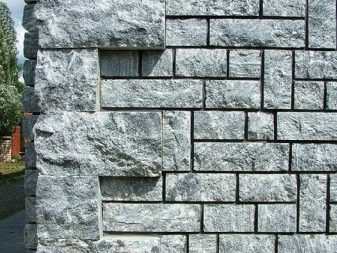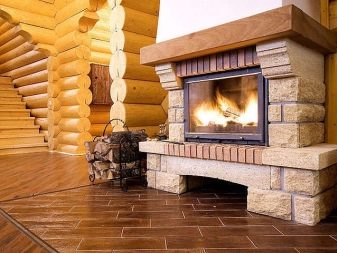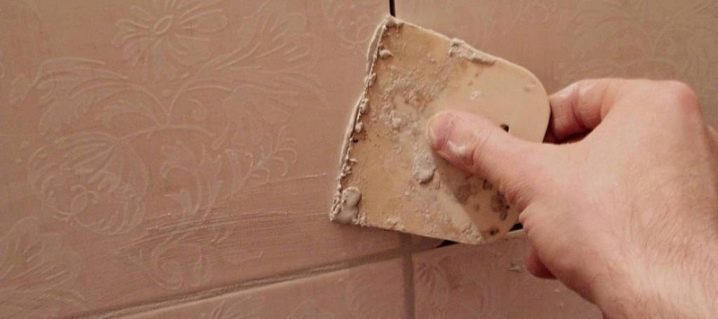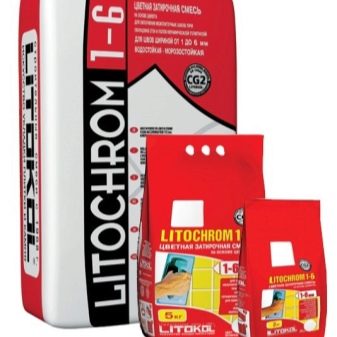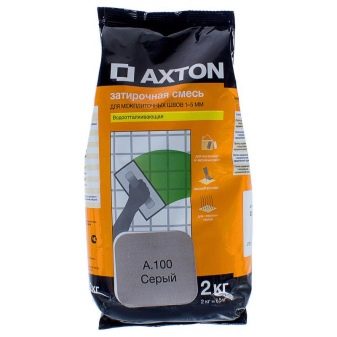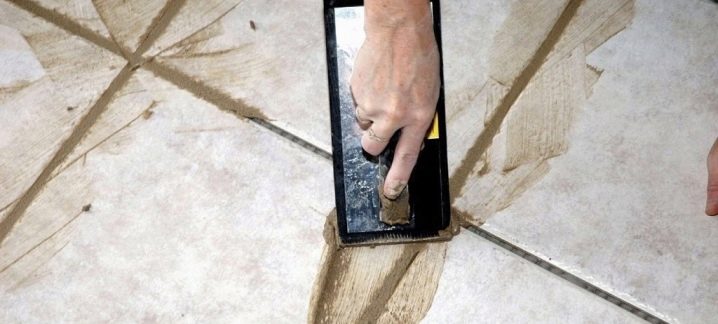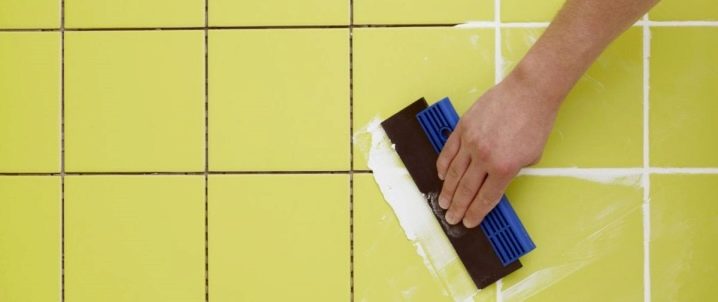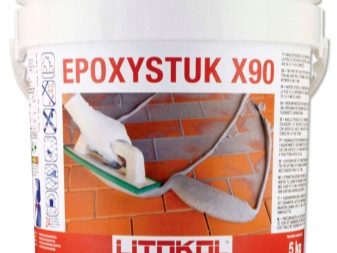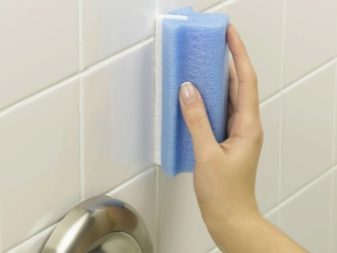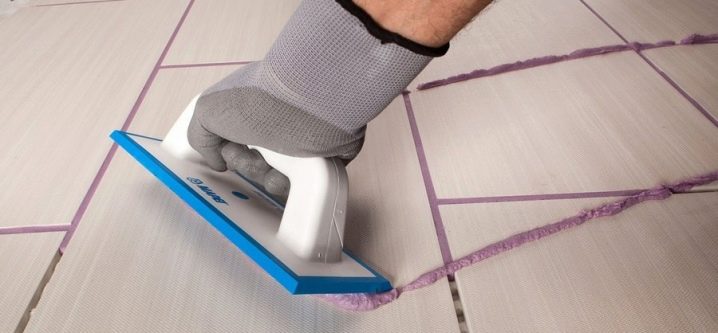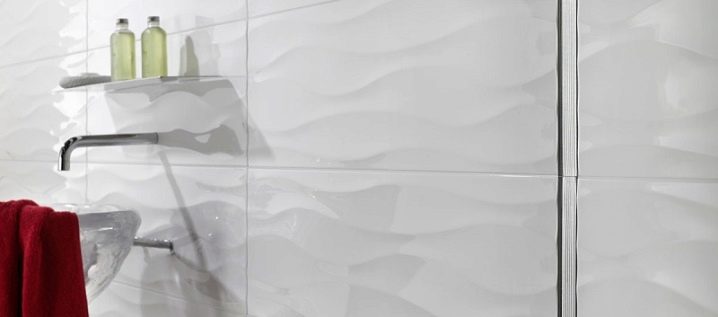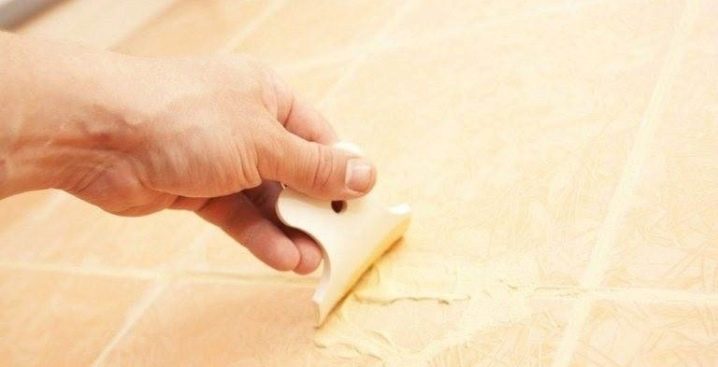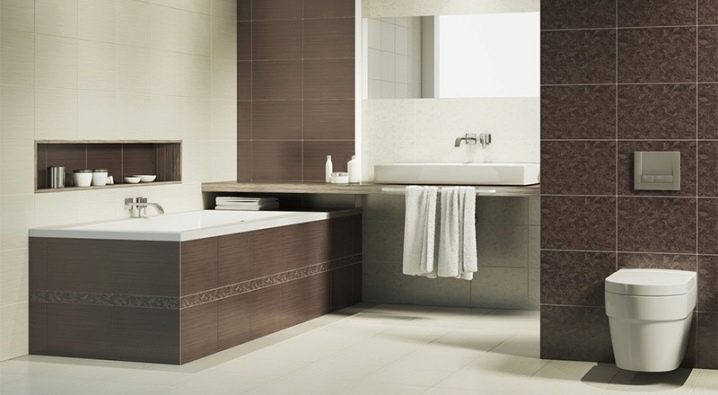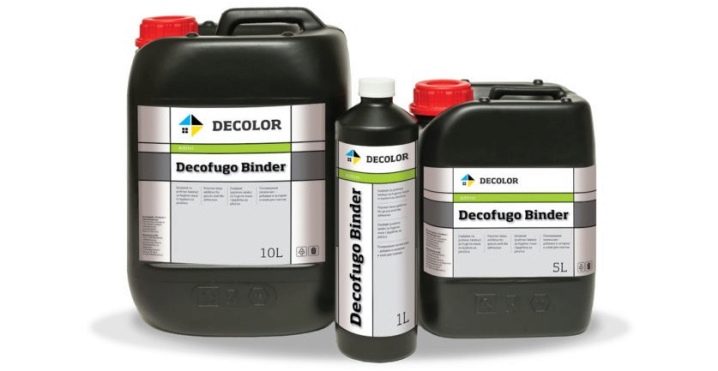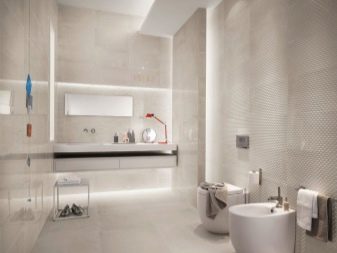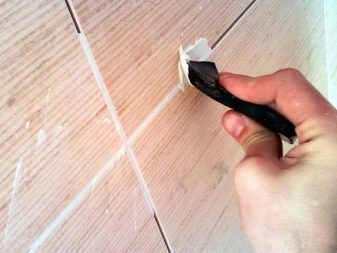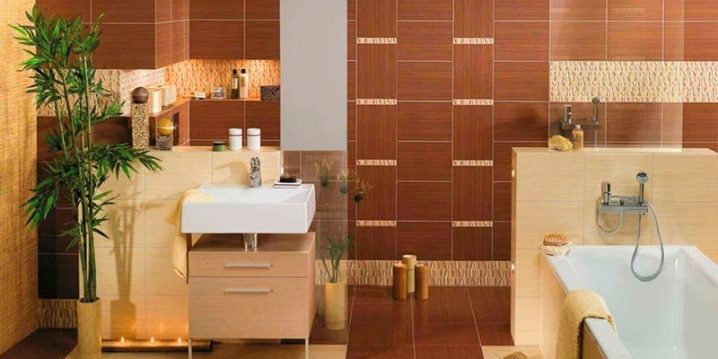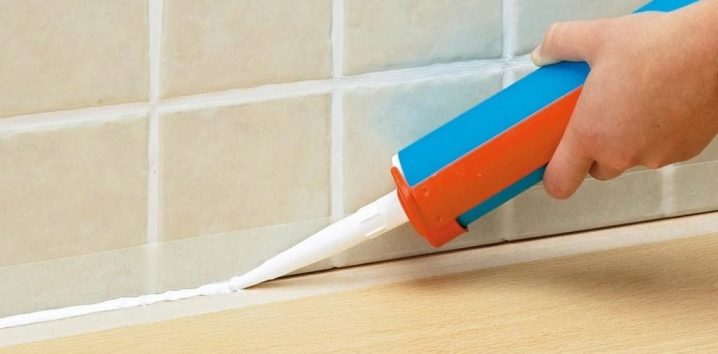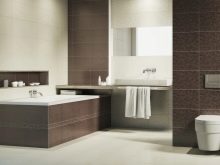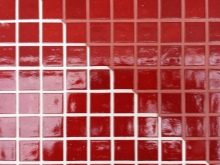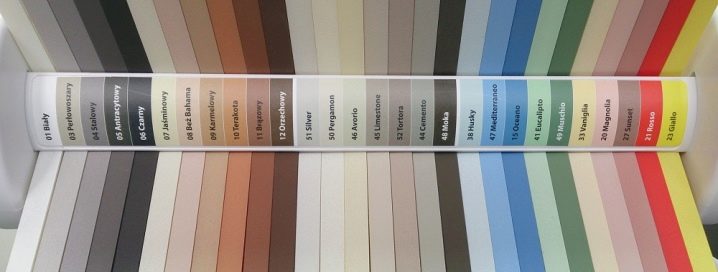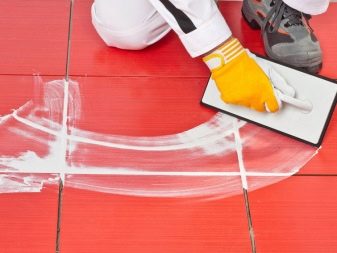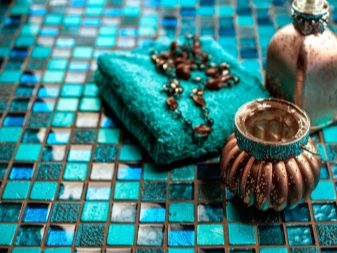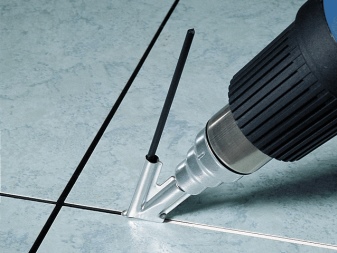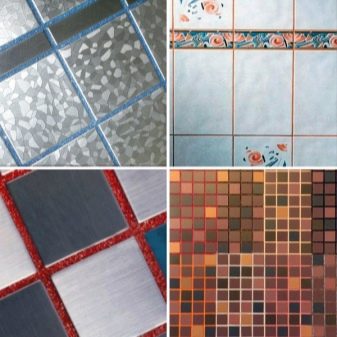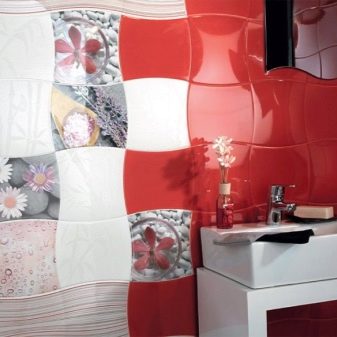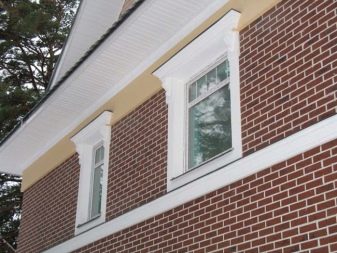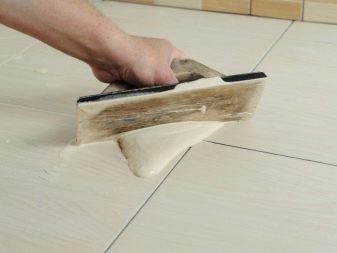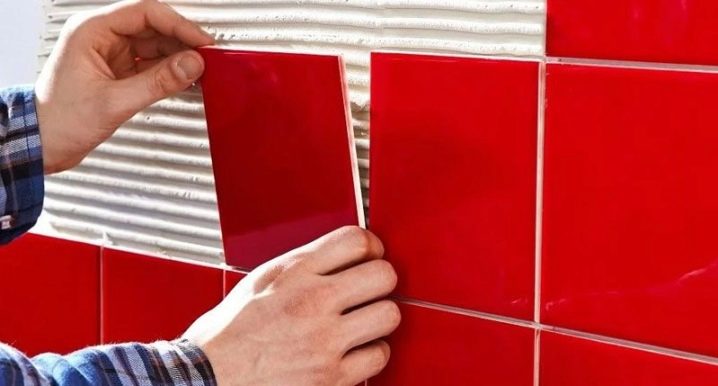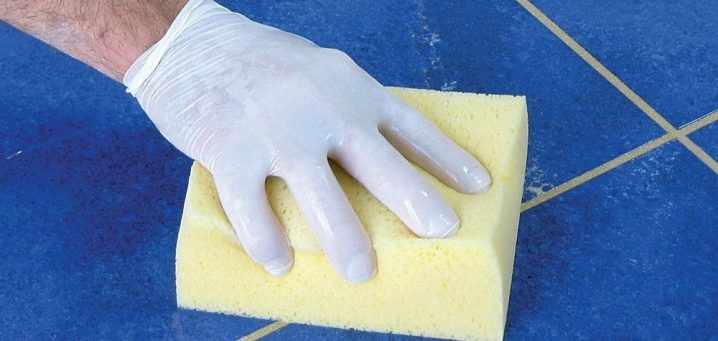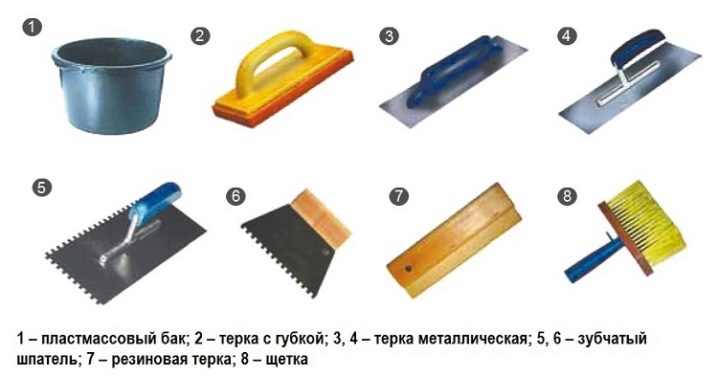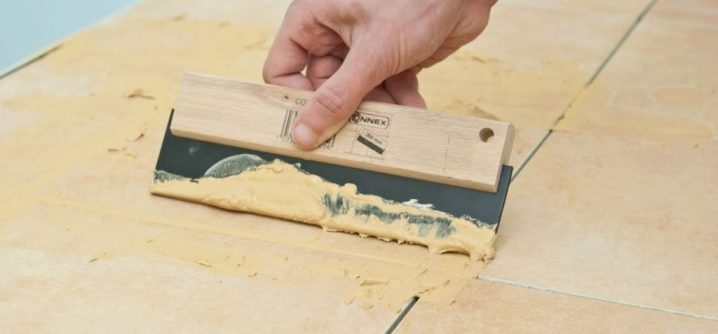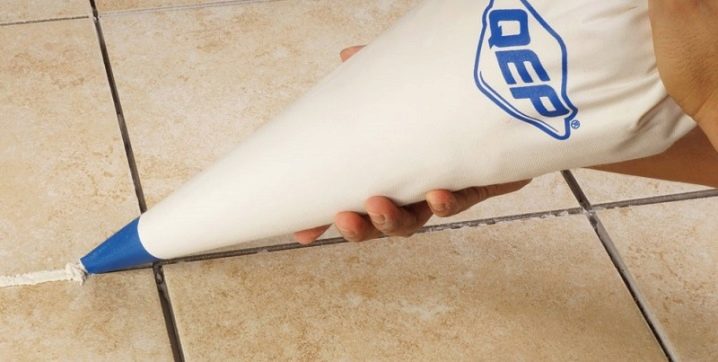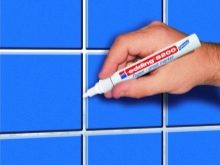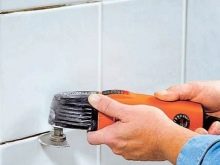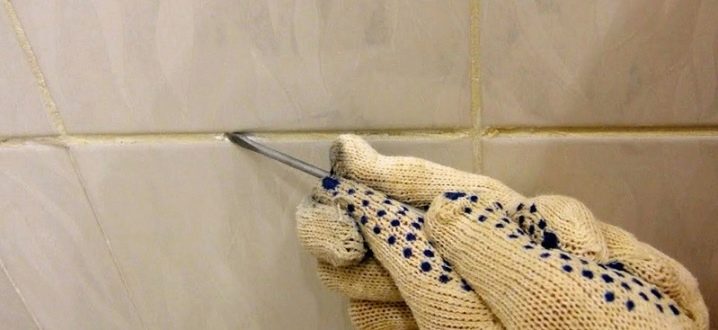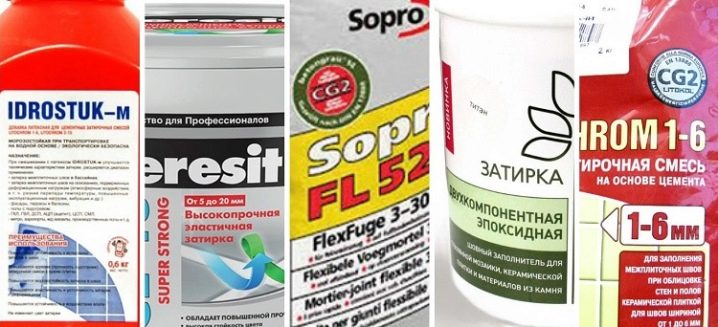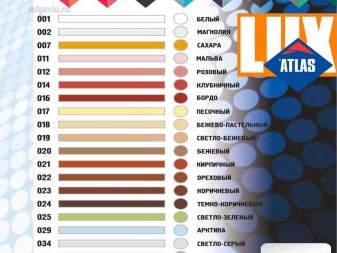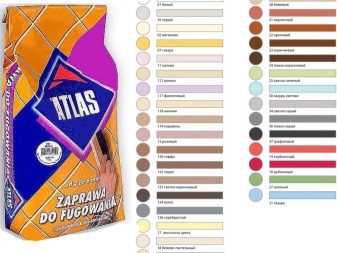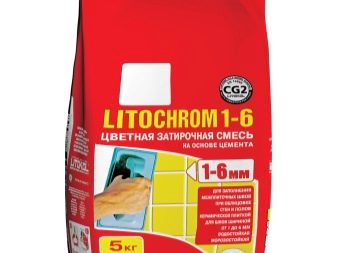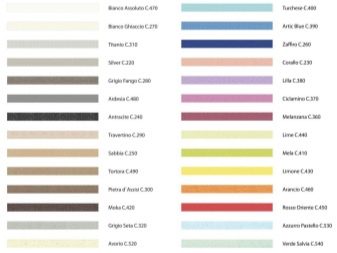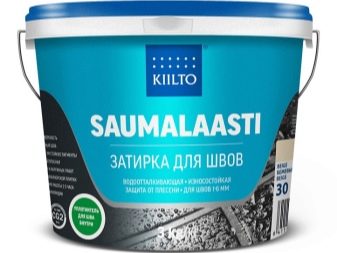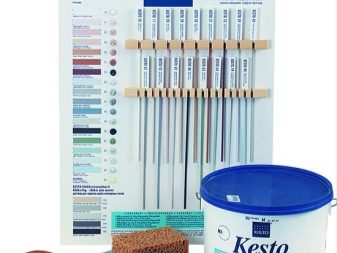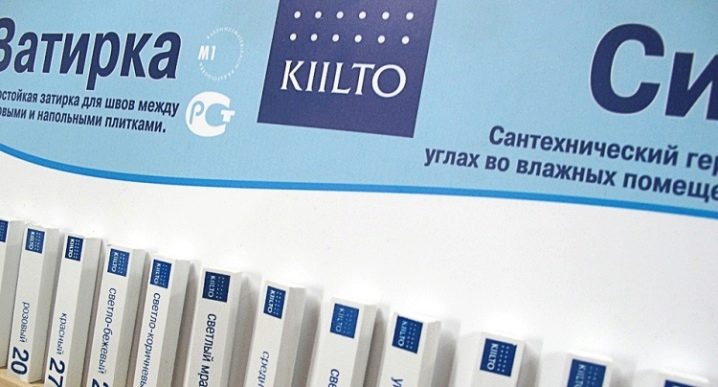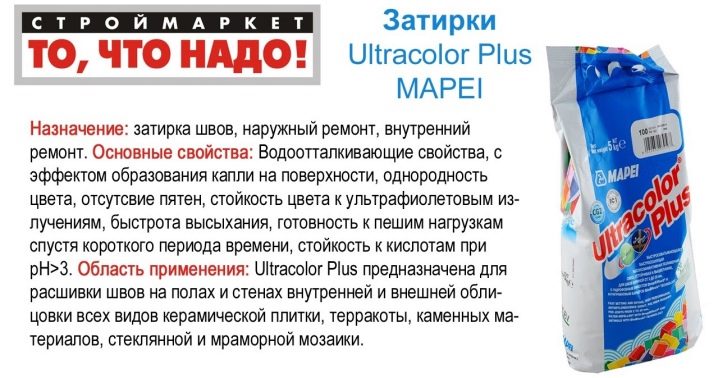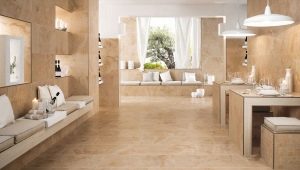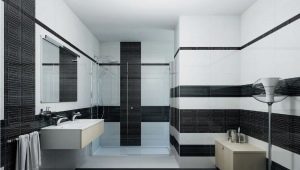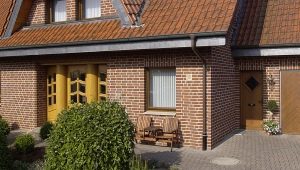Tile Grout: the finer points of selection and use
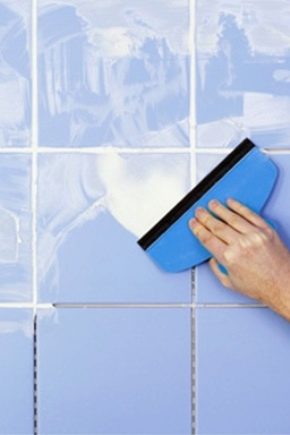
At the end of the laying of tiles on the floor or walls, be sure to fill the joints with grout. This stage of work should be approached with all responsibility, otherwise the coating will lose its tightness over time, and the paints will become muddy and dirty and instead of pleasing the eye, the finish will only spoil the mood.
What is a grout, what is it and how is it used? Answers to these and other questions - in our article.
Special features
Grout for joints used in the finishing works with the use of tiles. The surface after lining, as a rule, is left alone for 24 hours, so that the glue is completely dry, and after a day the seams are filled with grout.
The main purpose of grouting is to protect the walls from the adverse effects of moisture and pollution, as well as to improve the overall aesthetic appearance of the finish. With the help of the grout, the wrong geometry and other masonry defects are hidden.
Zatirochny mixes are issued in two types:
- Dry - usually these are the simplest cement-based compositions with the addition of mineral components. For work, they dissolve in water or liquid latex in the proportions indicated on the packaging.
- Liquid - mixtures derived from resins. They may already be ready for use, or they may be brought to the desired condition with special hardeners.
The main operational characteristics of all types of grout include:
- Water resistance. The composition is water repellent, it forms a solid substance, excluding deep penetration and retention of moisture.
- Wide range of colors. The range of leading manufacturers of grout presented a variety of colors from white to black (blue, green, red, pink, blue and others).
- Plastic. During operation, the mixture does not spread, and the treated seams remain smooth.
- Color stability. The grout is resistant to sunlight, over time it does not fade and does not change its shade, while maintaining the brightness and saturation of colors.
- Smooth surface. The mixture forms a solid and flat surface without hillocks and other irregularities. This improves the quality of coverage and the overall aesthetic appearance of the room.
- Resistance to temperature fluctuations. Grout does not change its properties by exposure to high and low temperatures, can be used in unheated rooms.
What is it for?
The use of grout for seams has several goals. First, it is the waterproofing of the surface and its protection against the appearance of an unpleasant fungus, the spread of mold and moss, which have the most disastrous effect on the human body, causing allergies, asthma and other dangerous diseases. These microorganisms release spores into the room, so if they are “settled” in an apartment, it will not be so easy to get rid of them. therefore it is better to take preventive measures and use special mixtures for treating seams.
The use of grout helps to strengthen the adhesion between the elements of the decor,their additional fixation on the surface prolongs the service life of the tile, makes the coating durable, impact-resistant and wear-resistant. Grout prevents debris, dust and insects between the tiles.
Fugue contributes to the creation of a stylish interior, allows you to implement interesting design solutions. For example, using a grout, you can create a visually even coating, but you can, on the contrary, using contrast, make the surface original and unusual. With a well-chosen grout, even the most nondescript finishing material gets decorative and style.
Operating principle
Regardless of which composition you prefer, the principle of the trowel is simple: when filling the joints between ceramic tiles, the mixture is glued to the edges and hardens, forming a solid partition between the cladding elements. This film is highly waterproof, resistant to fluctuations in temperature and ultraviolet rays, it is hard and impact resistant.
The composition is of high quality, so it does not shrink as it hardens, it avoids the appearance of cracks and splits.
The effect of the application of grout is similar to the principle of action of sealants and seals. Both those and others pursue the same goal - they create isolation of the main facing field from external elements.. The active component of modern sealants is sand, so that they can create an elastic joint that is identical to the seam from the trowel mixture. but sealants and seals wear out over time and need to be replaced. This can be avoided by using the grout mix.
Like other building mixes, they are produced in accordance with the requirements of GOST and are sold in tubes.
Surface types
There are several types of surfaces, the work with which has its own specific features, therefore, there are special requirements for grouting.
For example, standard grouting is suitable for a tiled surface, but if you use a brick for finishing, then by itself it looks quite unconventional and the grout is needed to give the surface a stylish and well-groomed look. In this case, use special formulations with small fractions.. Such mixtures will improve the coating and at the same time support the texture of the brick.
If an artificial stone acts as a facing material, it is necessary to wipe very carefully and use quite a bit of the mixture. Remember that the plane of the stone or brick must necessarily be above the surface of the seam. As for the light, then it is necessary to give preference to grout one tone darker than facing material - this will emphasize the seams.
If you are working on facing a fireplace or stove, then the main requirement for each composition is its refractoriness. The trowel must withstand any high temperatures.
For the gypsum surface, it is extremely important to carry out the work only if the tile is glued firmly. If at least one part shows mobility, it should be re-glued and only after that use grout.
Varieties of mixtures
All existing grouting are divided into three groups - cement, synthetic and sealing. Let us dwell on each type of mixture in more detail.
Cement
As the name implies, the main component of the composition is cement, according to this principle mixtures can be divided into cement and cement-sand.The first consists only of cement and various mineral additives, they are diluted with water or liquid latex. Such compounds are widely used for trimming narrow joints of less than 4 mm..
Mixtures of the second type, in addition to cement and impurities, contain sand, which gives them particular strength during drying. The mixture is used for wide joints, the exact size of which depends on the degree of grit in the composition of the grout. So, if the grains of sand are large, the composition is used to grind wide joints, and if it is necessary to process more than a seam less than 4-5 mmthen it is necessary to give preference to grouting with small particles of sand.
You should not use sand-cement grout when processing the edges of marble and glazed slabs. Sand is a powerful abrasive and can ruin the look of the finish.
Cement grout, usually made in white or gray shades. They are distinguished by a fairly low price and low consumption. So, the volume of 25 kg will cost the consumer 700-1200 rubles (according to 2017), and this amount is enough to process 100 square meters. m cladding.
The undoubted advantages of cement grout is also considered to be easy to use - it is easy to prepare and, if necessary, easy to remove even a decade after the repair.
Despite the abundance of positive properties, cement mixtures have disadvantages.
Among them:
- Cracking tendency. Over time, cracks may appear on the surface of the seam, moisture, dirt, debris and pathogens get into them, all this leads to a violation of the strength and integrity of the coating.
- Low hygroscopicity - like any other mortar made of cement, the grout permits moisture. Manufacturers are trying to neutralize this property with the help of liquid latex; however, no one on the market has succeeded in creating a composition that is completely water-repellent. Sooner or later, the water penetrates to the base, but good mixtures lose their consumer qualities 5-10 years earlier than simple compositions without mineral additives.
- Cement-based groutings are not suitable for use in environments where the coating is exposed to aggressive external influences. - on kitchen aprons, in the working premises of catering establishments and shops, where detergents, acids or blood often fall on the walls.
Disadvantages determine the scope of application of grout on the basis of the cement component - they are ideal for home repair and decoration of hallways, corridors, balconies and loggias.
Synthetic
Synthetic grout produced on the basis of resins of various types with the addition of mineral components, pigments and hardener. The advantages of such compositions include their resistance to moisture and the effects of acid-base solutions.
Depending on the main substance in the composition, there are several types of synthetic grout:
Epoxy
This category includes two-component mixtures of curable chemically resins with the addition of colored fine sand.
Such grout quickly dries and turns into a dense hygroscopic mass. This is the best option for finishing bathrooms, showers, baths and pools - in short, all the “wet” areas in the rooms, the antifungal component of the fugue prevents mold and fungus from occurring.
The advantages of epoxy trowels include:
- high elasticity, water resistance;
- when curing do not absorb dirt and dust;
- resistant to detergents and abrasives;
- a mixture of frost-resistant, resistant to temperature extremes, withstands t from -20 to +100 degrees Celsius;
- have a long service life - up to 50 years;
- do not fade over time and do not crack;
- have a wide color palette, including luminescent modifications, metallic and chameleon.
There are also disadvantages:
- form a rough surface due to the high content of sand;
- hardly removed from the surface;
- they freeze very quickly, therefore they require certain skills in the application;
- have a high cost.
Epoxy grouting has a wide range of applications and is used even outdoors. At the same time, they require experience and considerable - otherwise you can ruin both the tile and not the cheap grout.
Polyurethane
These are plastic blends exhibiting exceptionally high water repellency. They are used for grouting from 1 to 6 mm, they show themselves well on moving foundations.
The undoubted advantages of the compositions are:
- do not absorb dirt and dust;
- easily penetrate even the thinnest seams;
- freeze slowly, so in case of unsuccessful application there is time to correct the situation;
- easily removed from the surface of the tile;
- implemented in ready to use form.
There is a drawback - the mixture is destroyed by the action of chlorine, which, unfortunately, is an essential component of tap water.
Latex
Compounds with high plasticity, used in work with seams 2-3 cm thick. These mixtures are heat resistant, resistant to compression and bending. They are immune to adverse environmental conditions, do not crack and do not change color over time. Often used as an upper anchoring layer.
The disadvantages include the high cost of grouting. If the composition is not immediately removed from the tile, a turbid film forms on its surface.. The mixture does not tolerate steam cleaning, which significantly limits its scope.
Furan
Like epoxy compounds, they are made on the basis of resins, only latex or portland cement is used as an additional component, which provides elasticity and increased strength of the joints.
The advantages of the mixture are obvious:
- moisture resistant;
- resistant to acid-base solutions and ultraviolet illumination;
- forms a solid seam;
- does not crack throughout the entire period of operation.
However, the mixture has a significant drawback - it can react with aggressive chemical solutions, releasing toxic compounds.This makes it impossible to use furan grout in the living room.
The mixture is produced only in black, they are difficult to find in the free market.
Sealing
Made on silicone base. These include the above-mentioned sealants and seals. The advantages of such grout include moisture resistance and elasticity. However, the material wears out quickly, so it is not very popular among consumers.
Keep in mind that, contrary to popular belief, silicone flooring does not exist in principle. There is only silicone sealant, but they should not rub the seams - the composition is used exclusively for sealing the joints of the cladding with the sink and other sanitary installations. For finishing, apply a surface layer of grout of suitable composition.
Colour
The choice of tint grout largely determines the appearance of the entire room. Competently selected mixture can liven up even the most "unpretentious" and boring tiles.
When purchasing a mixture, you can rely on your own preferences, but several rules should be taken into account:
- light-colored grouting visually increases the space of the room due to the effect of the “combined pattern”;
- dark seams, on the contrary, emphasize each concrete tile in the general facing;
- if the tile pattern has decorative elements, then the color grout should be combined with them in color. Optimally take fugu for a couple of tones darker;
- for a dark-colored tile, the grout is matched a couple of tones darker, and for a light one, on the contrary, lighter;
- when working with multi-colored tiles, preference should be given to transparent fugues or grout with the effect of "chameleon";
- if you want to give the tile maximum expressiveness, feel free to draw out the seams in a contrasting shade.
Today, manufacturers produce a wide range of grout: blue, yellow, blue, maroon and orange, as well as metallic, pearl, gold and silver shades, bronze and glitter grout. Not so long ago, fluorescent compounds that glow in the dark appeared on the market.. They are very much in demand among fans of creativity in the interior.
If you are going to the store, take with you a tile that you will use for cladding.This will help you choose the best fugue color option.
Which one to choose?
Clearly understanding the peculiarity of each type of grout, it is easy to determine which composition is suitable for one type of work or another.
If we are dealing with relatively dry walls of the hallway or bathroom, then the simplest cement grout is enough. In rooms with high humidity it is necessary to give preference to more hygroscopic mixtures; here it is worth choosing a polyurethane or latex grout..
If the surface is constantly in contact with water (rooms in pools and showers), you should purchase a composition that prevents the formation of mold and fungus. These include epoxy groutpolyurethane can also be used.
The choice of the mixture is largely influenced by the characteristics of using the coating directly.
If the tile is laid on a moving surface or a vibrating base, then you should stop the choice on compositions with high plasticity, for example, furan fugue, polyurethane or latex.
The same compositions will be optimal for unheated premises or for facade work.If you buy other types of grout, then due to temperature fluctuations and the corresponding thermal expansion and contraction, the grout will simply crack.
The width of the seam is another factor influencing the choice of the mixture:
- 1-3 mm narrow slits best sealed plastic mixtures without mineral components;
- seams up to 6 mm thick, it is preferable to treat with fugues with fine sand;
- if the track is 1-2 cm wide, the composition should be very plastic, it is recommended to purchase a plasticized cement mixture with a coarse filler.
It is worth paying attention to the features of the tile itself, as the grout not only fills the gaps between the tiles, but also glues the ends of the tile:
- Tile with a glossy surface requires polyurethane and latex blends. It is possible to use a cement composition of small grain, it is strictly forbidden to grind with abrasives.
- Glass tiles or mosaics require epoxy fugues.
- Decorative epoxy grout interacts well with cement-sand fugs. It does not recommend liquid formulations. This will cause excessive grouting, which will later be quite difficult to clean.
For facade works and exterior wall finishes, the furan mixture is optimal.. Find it in stores is quite problematic, so if you could not buy this composition, then try cement with the addition of a latex mixture and fungicide, it will extend the life of the coating.
If you choose a grout for floor tiles, stop the choice on cement-sand or epoxy compositions. By the way, if you are engaged in finishing a fireplace or stove, feel free to purchase the same trowel mixtures. But the heated floor requires a polyurethane composition.
Incorrectly selected grouting mixture will significantly worsen the quality of the finishing coating, shorten the service life of the lining, and lead to a deterioration of its sanitary and aesthetic characteristics.
Terms of use
Fugue application is simple. It does not require special skills and much experience. However, some skill you still need.
Surface preparation
Grouting is done a day after facing the surface of the wall or floor. This is due to the characteristics of the cladding material. A day after facing, the glue still does not gain maximum strength.This makes it possible to quickly and easily remove all stains and dirt.
After 24 hours, the residual moisture of the tile ensures effective adhesion of the mixture to the material. If the liquid is larger, the grouting mixture will become liquid and the elasticity will be reduced - such a composition is hardly distributed along the seams.
In the same time do not stand more than a day, as open seams are prone to contamination, ingress of dust and debris, which can damage the fixation, and also complicate the application of any fugues.
Before work, clean the seams of glue residue, then clean up dust and small fragments with a sponge, brush or paint brush.
Keep in mind that the cleaner the surface to be treated, the higher the quality of grouting, the smoother the solution will lie and the stronger it will “bond” with tile edges.
Composition
For the application of troweling compounds will need construction tools:
- rubber spatula;
- trowel;
- building cone;
- cable for jointing.
In addition, the work useful rag and wet sponge.
Grouting can be applied in several ways. Consider each of them:
With a spatula
A little fugues are taken directly onto the tool, and then with force, going across the seam, pressed into the seam. After that, you need to once again cover up the seam, but already along, removing the excess mixture.
This process is simple, and if you enter into the right rhythm, then all the work can be done fairly quickly.
The grout pressed in by the spatula must occupy the entire space of the seam - the occurrence of voids is unacceptable! Otherwise, the fugue will not protect the tile, it will crack and burst.
Using a grater
The trowel is specially designed to quickly apply the mixture to the tile. Divorced in water, the composition is simply grated and "falls out" on the tile. After that you should move the float diagonally, gently smearing each seam. As in the first case, at the end of the work it is worth walking along the float to remove unused remnants of the mixture.
This method is optimal in working on large volumes, as well as in the case of floor tiles.
Try to limit the work area to about 1 square meter, this will give an opportunity to control the quality of work and the distribution of the fugue over the surface.
Trowel cone
If you have ever decorated the cake with a baking syringe, then you can roughly imagine the principle of applying the grout using a grout cone. The tool is a package in which the mixture is placed, which when pressed, it emerges from the cone in a thin even layer.
In order to grout this way, it is necessary to put the tip of the cone exactly on the seam and pressing on the walls, gently move along the seam. Well, it is easy to remove the excess with a damp cloth or with your own finger. However, professionals use for this a piece of cable of a suitable size.
Tips and tricks
Over time, grouting on the walls and the floor requires restoration, this is especially true for low-priced mixtures and formulations applied several decades ago.
To renew old seams, it is sometimes enough just to paint them.. To do this, prepare paint, a toothbrush and a small brush. The work will also need chlorine bleach. To begin, clean the seams of dust, dirt and grease with a toothbrush, then for 10-15 minutes, apply bleach mixed with water in a ratio of 1 to 1. After the specified time, rinse it off the surface and apply paint with a brush. This method is the easiest, but it is designed for no more than 6 months.After six months, the procedure must be repeated.
If you need a more long-term result, you will need to remove the old grout and apply a new. New grout applied with a rubber trowel.
If the quality of the grout suits you, but you decide to slightly change the color of the seams, then you should apply a thin layer of grout, to which the color of the desired shade is added.
Let us dwell on how to remove the old grout. Professionals use special tools for this, but if it is not there, it doesn't matter. Basically, You can use any knife, as long as the blade does not scratch the tile. If the knife is not at hand, use a simple screwdriver.. She, too, perfectly picks out the old coating.
After the old grout is removed, the seams should be cleaned from the remnants of the material with any brush or vacuum cleaner.
Experts recommend updating the grout every 5 years, in this case, your walls and the floor for many years will keep a stylish and fresh look.
Manufacturers
The most popular domestic consumers are grouting such well-known manufacturers as Atlas, Kiilto and some others.
Atlas
Production of the Polish concern Atlas is very competitive in the market of finishing materials and building mixtures.
This particular grout is preferred by professional dressers. This is due to the high performance characteristics:
- the mixture does not crack with time and does not peel off after drying;
- the solution is plastic, does not scratch the tile and easily fills even the narrowest joints;
- the solution retains elasticity for 2-3 hours - this time is enough to correct the shortcomings made during the application;
- characterized by resistance to temperature and hygroscopicity;
- assortment list includes more than 3 dozen colors, including colors such as bronze and silver.
Litokol
This is an Italian brand. Grouting of this brand is used for joints from 1 to 15 mm, they are used for the installation of glass, wood and metal tiles, as well as mosaics.
The undoubted advantage of the manufacturer is the widest choice of shades. In total, products are presented in 103 shades, among which there are even fluorescent options, metallized and pearlescent compounds.These fugues are 10 times more than cement ones in such important indicators as elasticity and water resistance. That is why professionals give preference to this particular brand when finishing pools, shower rooms and baths.
We should also note the resistance to temperature extremes. Grouting does not lose its performance properties at temperatures from -20 to +110 degrees, does not crack and does not crumble.
Ceresit
Building mixtures from Germany for many decades are synonymous with the highest quality and durability. Grout from the German brand is no exception. Ceresit trowels are used to seal tile joints, as well as glass or stone tiles. They have a wide range of application, both in internal, and in front works.
The advantages of the German holding grout include:
- hygroscopicity;
- environmental friendliness;
- high speed of hardening;
- resistance to temperature extremes.
Kiilto
This Finnish company produces grouting for tiles and clinker bricks, and is also famous for its products for washing and protecting tile surfaces.
Grouting mixes from this manufacturer are distinguished by minimal emission of harmful substances.Used for joints from 1 to 6 mm with a depth of no more than 3 mm.
Benefits include:
- wide color range -32 shades;
- universality - it is used both for internal, and for external finishing works;
- dries in 2-3 hours;
- immune to sunlight;
- does not change color and does not crack over time;
- protects against mold and mildew;
- gives a smooth and even seam.
This composition is most often used for designer tiles.
Mapei
This is an epoxy grout made in Italy, often called a “lacquer varnish”. The material can be called a symbiosis of the mass of grout and adhesive. The mixture is made on the basis of epoxy resins with the addition of sand and mineral impurities. Due to this composition, fugue acquires a special resistance to aggressive environmental factors, so the mixture is used in any work, in any temperature conditions and for any coatings.
Material in all environments shows only the most exceptional consumer characteristics:
- good distribution of the mixture;
- waterproof;
- adhesion strength with tiles;
- resistance to temperature and UV radiation;
- uniformity of color during drying;
- high strength.
A distinctive feature of the grout of this brand is its transparent texture, so that the surface of the seam takes on a glossy look "under the varnish."
The following video discusses the nuances that should be considered when choosing a grout for a tile.
